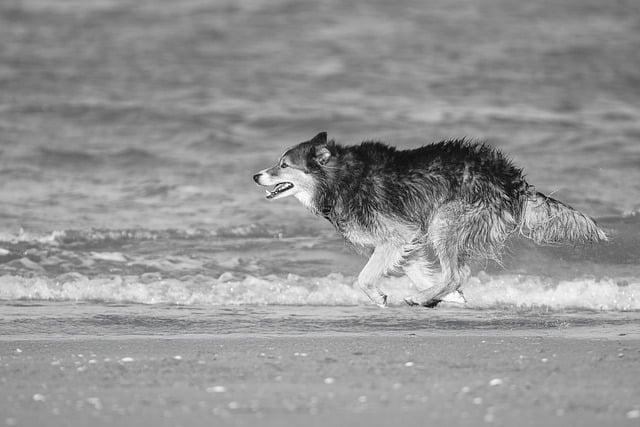As the sun dipped below the horizon, Sarah noticed her dog, Max, acting strangely. He paced restlessly, his ears pinned back, and a low growl rumbled from his throat. These were not mere quirks; they were danger signals. Ignoring them could lead to serious consequences. Understanding your dog’s body language is crucial. Signs like excessive barking, sudden aggression, or withdrawal can indicate fear, pain, or anxiety. By recognizing these signals, you can protect your furry friend and ensure a happier, healthier life together. Don’t wait—learn the signs today!
Contents
- Understanding the Warning Signs of Canine Distress
- Identifying Behavioral Changes That Indicate Danger
- Recognizing Physical Symptoms That Require Immediate Attention
- Implementing Preventive Measures to Ensure Your Dogs Safety
- Q&A
Understanding the Warning Signs of Canine Distress
Recognizing when your dog is in distress is crucial for their well-being. Dogs, being naturally expressive creatures, often communicate their discomfort through various behaviors and physical signs. Understanding these signals can empower you to take immediate action, ensuring your furry friend receives the care they need. Pay close attention to changes in their normal behavior, as these can be the first indicators of distress.
Some common signs of canine distress include:
- Excessive barking or whining: While vocalization is normal, sudden increases can indicate anxiety or fear.
- Changes in appetite: A dog that suddenly refuses food or shows disinterest in treats may be experiencing discomfort.
- Withdrawal or hiding: If your dog seeks solitude or avoids interaction, it may be a sign of distress.
- Physical signs: Look for trembling, panting, or a tucked tail, which can indicate fear or pain.
Additionally, observe your dog’s body language closely. A stiff posture, pinned ears, or a lowered head can signify that your dog is feeling threatened or uncomfortable. These non-verbal cues are essential in understanding their emotional state. If your dog displays these signs, it’s important to assess their environment and identify potential stressors, whether they are external noises, unfamiliar people, or changes in routine.
remember that every dog is unique, and their distress signals may vary. Some breeds may be more expressive than others, while individual personalities can also influence how distress is communicated. Keeping a close eye on your dog’s typical behavior will help you recognize when something is off. By being proactive and attentive, you can create a safe and supportive environment that minimizes distress and promotes overall well-being.
Identifying Behavioral Changes That Indicate Danger
Understanding your dog’s behavior is crucial for ensuring their safety and well-being. Certain changes in their demeanor can signal that something is amiss. For instance, if your dog suddenly becomes more aggressive or defensive, it may indicate that they feel threatened or are in pain. This shift can manifest as growling, barking, or even snapping, which should never be taken lightly. Recognizing these signs early can help prevent potential incidents and allow for timely intervention.
Another red flag to watch for is a marked change in energy levels. If your typically playful dog becomes lethargic or withdrawn, it could be a sign of underlying health issues or emotional distress. Pay attention to their interest in activities they once enjoyed; a sudden disinterest can indicate that something is wrong. Additionally, if your dog starts to isolate themselves from family members or other pets, it may be a cry for help that should not be ignored.
Changes in eating and drinking habits can also serve as indicators of danger. A sudden loss of appetite or excessive thirst can point to various health problems, from dental issues to more serious conditions like diabetes or kidney disease. Similarly, if your dog begins to exhibit unusual behaviors around food, such as guarding their bowl or becoming aggressive during mealtime, it may suggest anxiety or fear that needs to be addressed promptly.
Lastly, keep an eye on your dog’s body language. Signs such as a tucked tail, flattened ears, or avoidance of eye contact can indicate fear or anxiety. If your dog is constantly on edge, pacing, or exhibiting compulsive behaviors, these are clear signals that they may be experiencing stress or discomfort. Being attuned to these subtle changes can empower you to take action, ensuring your dog’s safety and happiness in any situation.
Recognizing Physical Symptoms That Require Immediate Attention
As a responsible dog owner, it is crucial to be vigilant about your pet’s health. Certain physical symptoms can indicate that your furry friend is in distress and requires immediate veterinary attention. Recognizing these signs early can make a significant difference in your dog’s well-being and recovery.
One of the most alarming symptoms to watch for is **difficulty breathing**. If your dog is panting excessively, has a blue-tinged tongue, or is struggling to catch its breath, it could be experiencing a serious respiratory issue. Other signs include **coughing**, **wheezing**, or **open-mouth breathing**. These symptoms can indicate conditions such as pneumonia, heart disease, or even an allergic reaction, all of which necessitate prompt medical intervention.
Another critical warning sign is **persistent vomiting or diarrhea**. While occasional digestive upset can be normal, repeated vomiting or diarrhea lasting more than 24 hours can lead to dehydration and other severe health complications. Pay attention to the presence of **blood** in the vomit or stool, as this can indicate a more serious underlying condition, such as internal bleeding or poisoning. In such cases, immediate veterinary care is essential to prevent further health deterioration.
Additionally, be alert for signs of **pain or discomfort**. If your dog is whining, whimpering, or exhibiting unusual aggression, it may be experiencing significant pain. Look for physical indicators such as **limping**, **excessive licking of a specific area**, or **changes in posture**. These behaviors can signal injuries, fractures, or other serious conditions that require urgent veterinary evaluation. Recognizing these danger signals can help ensure your dog receives the care it needs without delay.
Implementing Preventive Measures to Ensure Your Dogs Safety
Ensuring the safety of your dog requires a proactive approach that encompasses various preventive measures. One of the most effective strategies is to create a secure environment at home. This includes installing sturdy fences, securing gates, and removing any hazardous items from your dog’s reach. By doing so, you minimize the risk of accidents and provide a safe space for your furry friend to explore and play.
Regular veterinary check-ups are essential in identifying potential health issues before they escalate. Vaccinations, parasite control, and dental care are crucial components of your dog’s health regimen. Additionally, keeping your dog on a balanced diet and ensuring they receive adequate exercise can significantly reduce the likelihood of health-related emergencies. A healthy dog is less prone to accidents and injuries, making routine care a vital aspect of preventive safety.
Training your dog to respond to commands can also play a pivotal role in their safety. Basic obedience training not only strengthens the bond between you and your pet but also equips them with the skills to navigate various situations. Consider teaching commands such as:
- Come – Ensures your dog returns to you when called, especially in potentially dangerous situations.
- Stay – Helps keep your dog in a safe position, preventing them from running into traffic or other hazards.
- Leave it – Teaches your dog to ignore harmful objects or substances they might encounter.
Lastly, being aware of your dog’s behavior is crucial in recognizing danger signals. Dogs communicate their discomfort or fear through body language and vocalizations. Signs such as excessive barking, growling, or cowering can indicate that your dog is feeling threatened. By observing these signals, you can take immediate action to protect your dog from potential dangers, whether it be a stressful situation or an aggressive animal. Understanding and responding to your dog’s needs is a fundamental aspect of ensuring their safety.
Q&A
-
What are common dog danger signals?
Common danger signals in dogs include:
- Excessive barking or growling
- Showing teeth or snapping
- Stiff body posture
- Tail tucked between legs
-
How can I recognize if my dog is in distress?
Signs of distress in dogs may manifest as:
- Whining or whimpering
- Excessive panting
- Refusal to eat or drink
- Hiding or seeking isolation
-
What should I do if I notice these signals?
If you observe any danger signals, it is crucial to:
- Stay calm and avoid sudden movements
- Assess the situation for potential threats
- Give your dog space if they seem aggressive or fearful
- Consult a veterinarian or a professional dog trainer for guidance
-
Can training help reduce danger signals?
Yes, proper training can significantly help in reducing danger signals by:
- Building trust and confidence in your dog
- Teaching appropriate behaviors and responses
- Socializing your dog with other animals and people
- Providing mental stimulation to alleviate anxiety
recognizing dog danger signals is crucial for ensuring the safety of both pets and people. By staying vigilant and informed, we can foster a harmonious environment where dogs feel secure and loved. Let’s prioritize awareness for a safer community.

大家好,我是彼得潘,專業的手法身體治療師。我喜歡探索和研究各種主題,並透過與人工智慧的合作分享專業、實用、有趣的文章。我們定期進行人工審核,以確保內容的準確性。如果您發現文章中有任何不準確的地方,請隨時與我們聯繫,我們會及時糾正。您可以透過 [email protected] 與我們聯繫。



